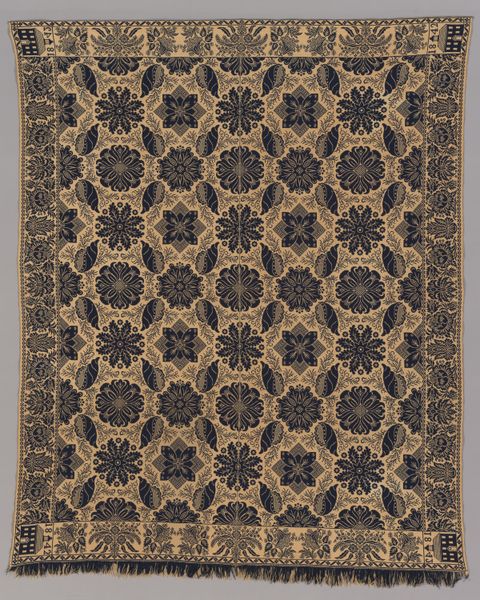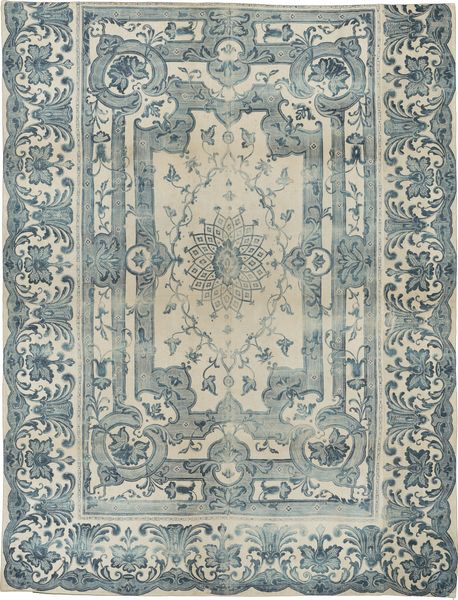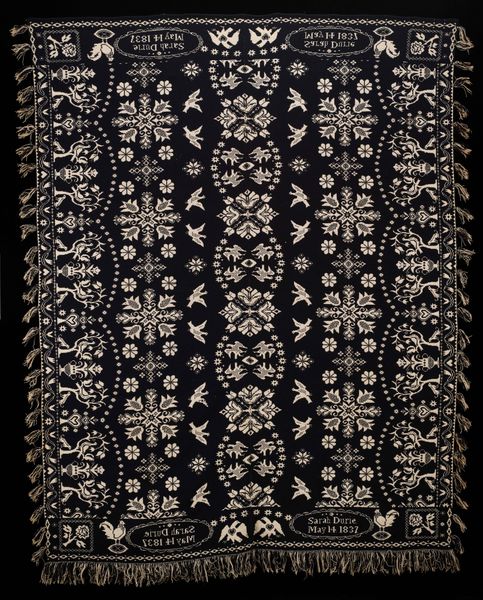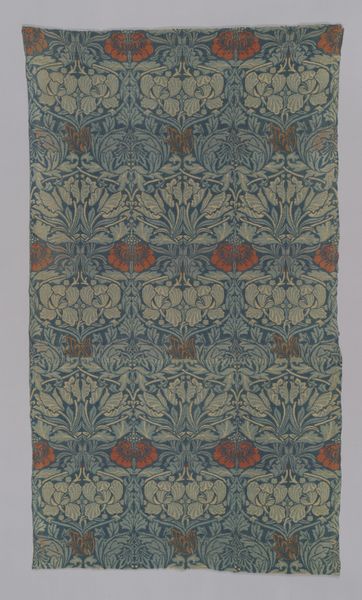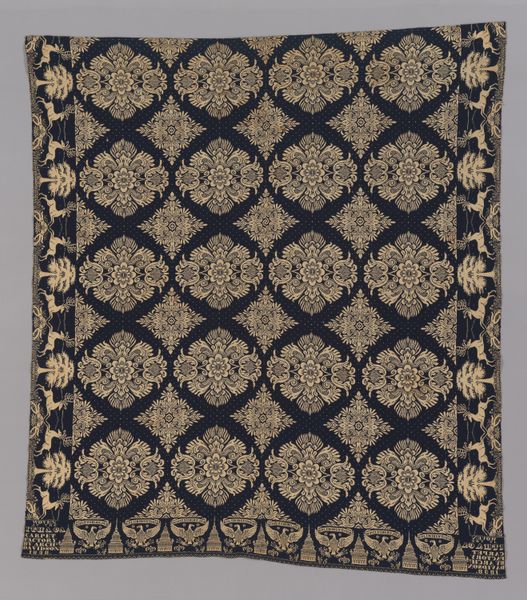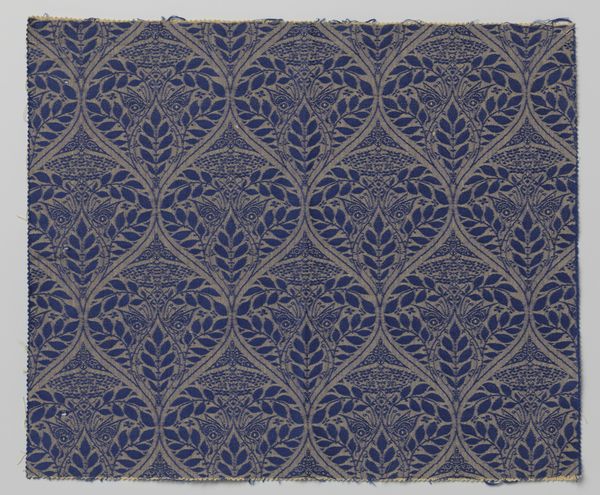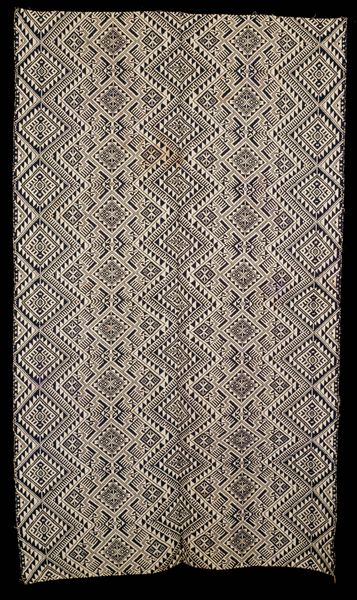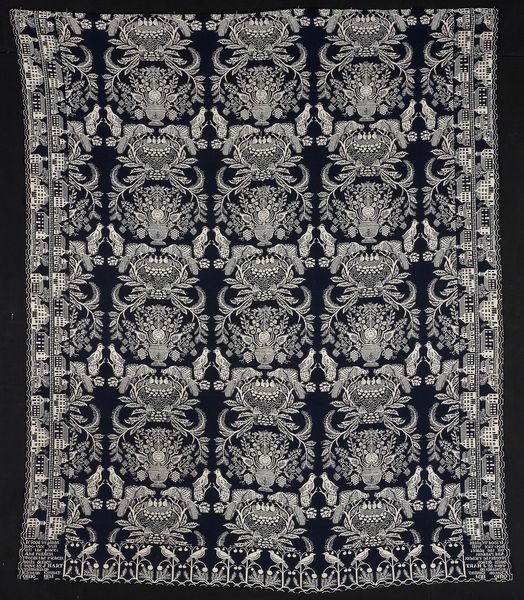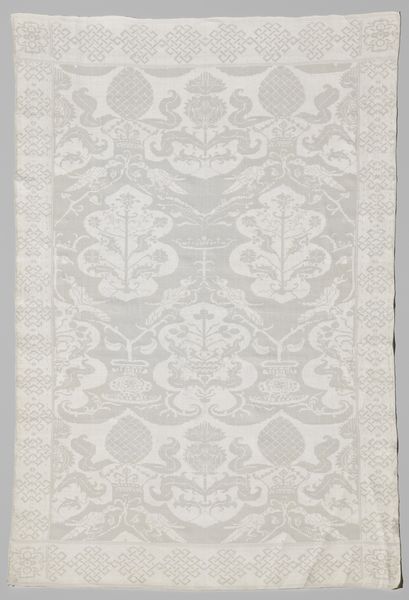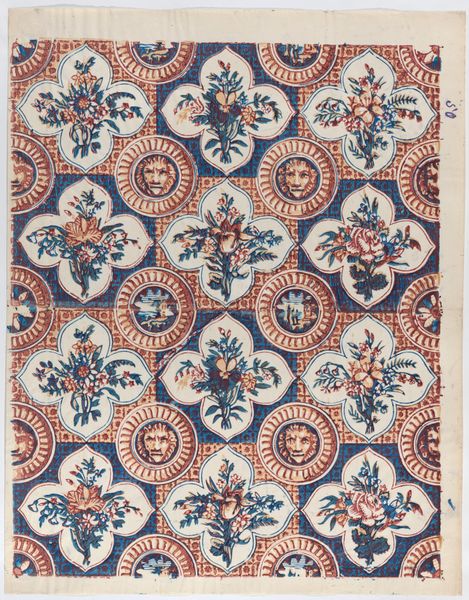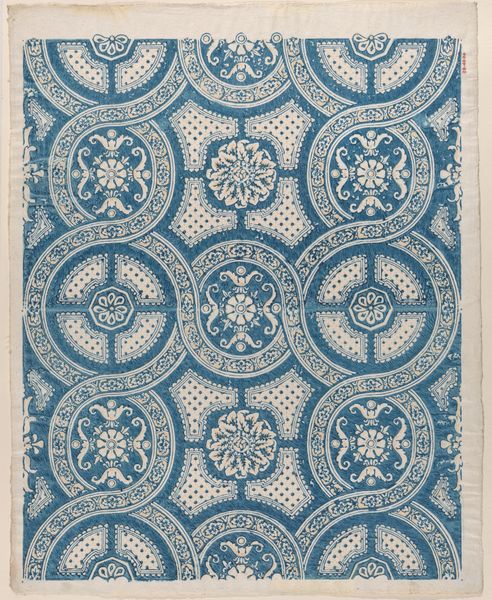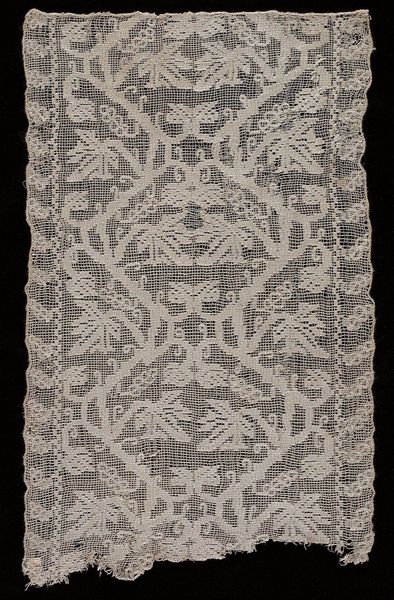
weaving, textile
#
folk-art
#
weaving
#
textile
#
pattern design
#
folk-art
#
geometric
Dimensions: 233.7 × 198 cm (92 × 78 in.) Repeat: 50.2 × 52 cm (19 3/4 × 20 1/2 in.)
Copyright: Public Domain
This coverlet was woven by William Craig, Sr. in the mid-19th century, probably in the United States. It's made of wool and cotton, and if you look closely, you can see how the contrasting dark and light threads create an intricate geometric pattern. These textiles were often made on a loom using a technique called Jacquard weaving, which allowed for complex, repeatable designs. The Jacquard loom was revolutionary for its time, using punch cards to automate the weaving process, a precursor to modern computing. What I find interesting about this coverlet is the tension between handcraft and industrialization. On one hand, it reflects the skill and artistry of the weaver. On the other hand, it’s a product of mechanized production, made possible by new technologies that transformed the textile industry and, indeed, the nature of labor itself. We can appreciate it both as a work of art and a document of social and technological change.
Comments
No comments
Be the first to comment and join the conversation on the ultimate creative platform.
